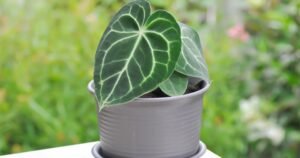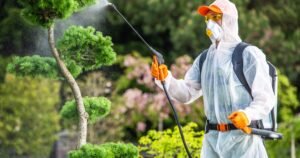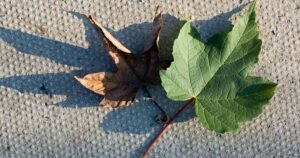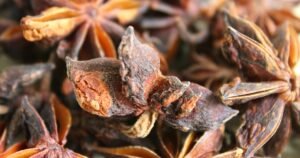Small leaves covered in wax embody nature’s creative designs. This unique characteristic enables these leaves to survive in harsh conditions by reducing water loss through transpiration. The waxy coating, known as the cuticle, provides a protective layer against excess sunlight, wind, and pests.
The waxy covering on plant leaves, young stems, and fruit is called the “cuticle.” It is composed of cutin, a wax-like material produced by the epidermal cells of the plant.
It also imparts a certain glossy appearance to the leaves, enhancing their aesthetic appeal. This adaption is most commonly observed in plants residing in arid environments, where water conservation is of utmost importance.
Introduction
Plants possess a remarkable array of adaptations that enable them to thrive in diverse environments.
One intriguing adaptation observed in certain plant species is the presence of small leaves covered in wax.
This wax coating serves various purposes, ranging from water conservation and protection against environmental stress to deterrence against herbivores.
In this article, we will delve into the intricacies of this adaptation, exploring its significance, the plants that exhibit it, the composition of the wax, and the evolutionary advantages it offers.

Understanding the Significance of Wax-Coated Small Leaves
The wax coating on small leaves of certain plant species plays a vital role in their survival and overall health.
It serves multiple important purposes, enhancing the plant’s ability to adapt and thrive in its specific habitat.
Some key significance of wax-coated small leaves include:
1. Water Conservation:
The wax coating forms a protective barrier that reduces water loss through transpiration.
This is particularly crucial for plants in arid or semi-arid environments where water is scarce.
The wax helps to retain moisture within the leaf, ensuring the plant can endure prolonged periods of drought.
2. Protection Against Environmental Stress:
The wax layer shields the small leaves from harsh environmental conditions such as extreme temperatures, strong winds, and ultraviolet (UV) radiation.
It acts as a barrier, preventing damage to the leaf tissues and maintaining the plant’s health and vitality.
3. Deterrence Against Herbivores:
The presence of wax on leaves can deter herbivores, making it difficult for them to consume the plant.
The wax can create a slippery or unappealing surface for herbivores to feed on, reducing damage to the plant and minimizing the risk of predation.

Plant Species Exhibiting Small Leaves Covered in Wax
Several plant species exhibit small leaves covered in wax, small leaves covered in wax showcasing the prevalence and diversity of this adaptation across different botanical families. Some notable examples include:
1. Echeveria:
Echeveria is a genus of succulent plants known for their rosette-shaped small leaves covered in a thick wax layer.
This wax coating not only protects from intense sunlight but also aids in water retention, allowing these plants to thrive in arid regions.
2. Hoya Carnosa (Wax Plant):
The Hoya Carnosa, commonly known as the Wax Plant, features glossy, succulent leaves covered in a thick layer of wax.
This waxiness helps the plant retain moisture and offers protection against dry conditions, making it well-suited for indoor or low-humidity environments.
3. Kalanchoe:
Various species of Kalanchoe exhibit small leaves covered in a waxy layer, contributing to their distinctive appearance and water-saving abilities.
The wax layer is essential for surviving in their native habitats, often characterized by limited water availability.
Composition of the Wax Coating
The wax coating on small leaves consists of a complex mixture of organic compounds, small leaves covered in wax, each contributing to its unique properties and functions.
The composition can vary among different plant species, but the main constituents include:
1. Long-chain Alkanes:
Long-chain alkanes are hydrocarbons that form the bulk of the wax layer.
These compounds contribute to the waterproofing and protective properties of the wax coating, reducing water loss from the leaf surface.
2. Aldehydes, Alcohols, and Esters:
These compounds enhance the flexibility and adhesion of the wax layer, ensuring it adheres effectively to the leaf surface and provides a cohesive barrier against environmental stressors.
3. Terpenoids:
Terpenoids, including compounds such as triterpenoids and sterols, contribute to the overall stability and rigidity of the wax layer.
They also have protective properties against pathogens and herbivores.
Evolutionary Advantages of Wax-Coated Small Leaves
The evolution of a wax coating on small leaves represents an adaptive strategy that has likely emerged over millions of years.
The wax adaptation offers several evolutionary advantages that contribute to the plant’s fitness and survival in diverse habitats:
1. Increased Survival in Arid Environments:
The wax coating provides a crucial advantage in arid or semi-arid environments by reducing water loss through transpiration.
Plants with wax-coated leaves can endure extended periods of drought and thrive in regions where water is limited.
2. Enhanced Resistance to Environmental Stress:
The protective barrier formed by the wax layer enhances the plant’s resilience to environmental stressors, such as extreme temperatures and strong winds.
This, in turn, increases the plant’s chances of survival and successful reproduction.
3. Deterrence of Herbivores:
The presence of a waxy surface can deter herbivores from feeding on the leaves, protecting the plant from damage and allowing it to allocate resources towards growth and reproduction rather than repair.
Experimental Studies on Wax-Coated Small Leaves
Experimental studies provide valuable insights into the detailed functioning, formation, and evolutionary aspects of wax-coated small leaves in plants.
Such research often involves a comprehensive analysis of wax composition, detailed observation of leaf morphology, and experimentation under varying environmental conditions.
These studies can help us understand the various factors influencing the formation of the wax layer, the genetic basis of this adaptation, and the underlying mechanisms through which it confers benefits to the plant.
Further research in this area has the potential to contribute significantly to our understanding of plant adaptations.
It could have practical implications for agriculture and horticulture, especially in the context of changing climate conditions.
Application in Agriculture and Horticulture
Understanding the benefits and mechanisms of wax-coated leaves can have significant implications for agriculture and horticulture.
By selectively breeding for plants with more effective wax coatings, we can cultivate crops that are more resistant to drought, extreme temperatures, and predation, thereby increasing yield and resilience.
This knowledge can also aid in the design of agricultural practices that ensure the longevity and productivity of wax-coated plants, particularly in water-scarce environments.
Further, small leaves covered in wax such insights could assist in the development of agricultural products, like foliar sprays, that mimic the protective functions of leaf wax and could be applied to plants lacking this adaptation.
Therefore, ongoing research into wax-coated leaves is not only fascinating from a botanical standpoint but also holds promising practical applications.
Conclusion
The adaptation of small leaves covered in wax exemplifies the extraordinary ways in which plants have evolved to survive and thrive in diverse ecosystems. This wax coating serves as a protective shield, conserving water, defending against environmental stress, and deterring herbivores. Understanding the significance of plant species exhibiting this adaptation, the composition of the wax, and evolutionary advantages sheds light on the intricate mechanisms plants employ to adapt to their surroundings and ensures their continued existence and success in the natural world.
FAQs
What is a small leaf covered in wax structures?
Small leaves covered in wax structures are unique plant adaptations where the leaf surface develops a waxy coating. This coating, composed of various organic compounds, serves multiple functions, including water conservation, protection from environmental stressors, and deterrence of herbivores. It’s especially common in plants native to dry environments where water conservation is vital.
Why are my leaves waxy?
The waxiness of leaves can be due to a natural plant adaptation for survival. The wax serves to prevent water loss through transpiration, especially in arid environments. Additionally, small leaves covered in wax provide a protective barrier against environmental stressors and deter herbivores. Plant species and environmental conditions greatly influence the degree of leaf waxiness.
What is the wax on leaves called?
The wax on leaves is often referred to as the “cuticle.” It is a hydrophobic layer that covers the outer surface of the plant’s epidermis, protecting against various environmental stressors. The cuticle primarily consists of cutin, small leaves covered in wax, a complex fatty acid polymer, and waxes, which can be further divided into epicuticular and intracuticular waxes.
What is the wax on plants called?
The wax on plants is known as the “cuticle.” This protective layer mainly consists of cutin and various waxes. These waxes include epicuticular and intracuticular waxes, forming a barrier against environmental stressors. The waxy cuticle aids in water conservation and protects against herbivores, enhancing plant survival, particularly in arid conditions.











